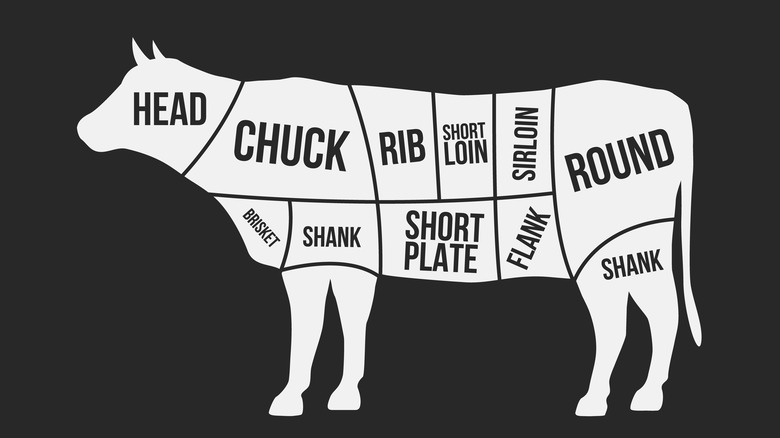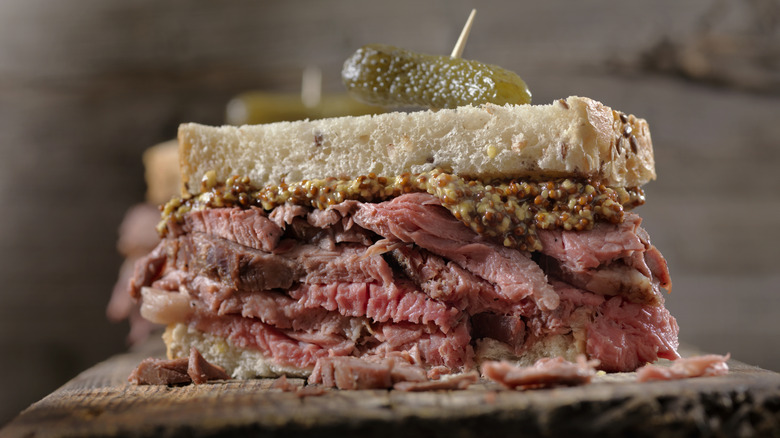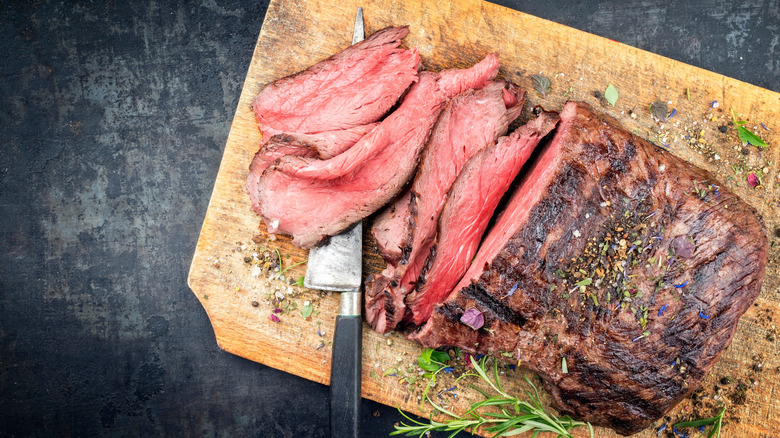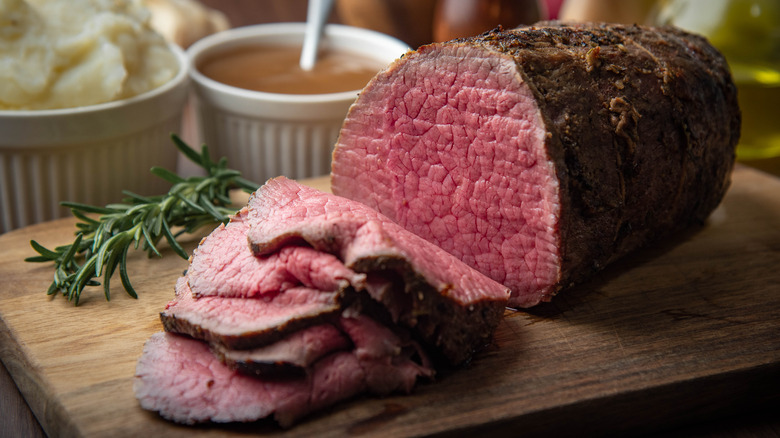3 Types Of Round Roast, Explained
The round roast comes in three forms. All three cuts come from the rump and back legs of the cow, and the entire cut from the leg is known as the round primal. It is then broken down into the three subsections: the top round, bottom round, and eye of round cuts. The leg is a highly lean and tough section of the cow as the leg muscles are used often, and, as a result, fat does not accumulate there. For this reason, none of the three cuts are suited for the well-done steak lover. In order to maximize tenderness they are best left a little pink and prepared with gentle cooking methods. However, this makes all three cuts a lower-fat option for those who love red meat but are watching their intake. The USDA rates them as extra-lean, according to the Mayo Clinic.
If you choose to opt for a cut from this section of the cow, it's important to know how to cook it to maximize tenderness and flavor. They can be extremely tough if not cooked correctly. However, once you have a handle on the how, all three cuts are a delicious and economical addition to the dinner plate.
The top round comes from inside the leg
The top round cut is the largest muscle of the round primal cut. It is sometimes referred to as the inside round as it comes from the inner part of the cow's back leg. The top round is lean, yet still has ample marbling and a lot of flavor. Because it's lean, however, it can easily become chewy and dry if overdone. The best cooking method is slow-roasting at a lower temperature in order to maintain juiciness.
The most popular preparation of a top round cut is roast beef. When you order a roast beef sandwich, it's more than likely made up of thinly sliced pieces of top round. When braised, the cut is a simple pot roast. London broil is another version of this cut. Grilling and roasting are the best cooking methods for thick cuts of the top round. London Broil is marinated then grilled quickly over very high heat and sliced thinly against the grain to keep it tender. Thinner cuts from the muscle, such as the Swiss steak, are best braised after being prepared by tenderizing with a meat mallet prior to braising.
The bottom round is cut from the outside leg
The bottom round is also cut from the leg of the cow, but the muscle sits on the outside. It is sometimes called a rump roast or outside round cut. The muscle has more marbling than the top round and is cut smaller.
The bottom round cut is best prepared either by slow-cooking or roasting low-and-slow in order to dissolve that marbling, which also helps infuse flavor and moisture into the meat, as well as break down the connective tissue. It can also be braised as a pot roast in a slow cooker to maintain juiciness. Adding liquid, such as broth or water, is key if you want it as tender as possible. It is essential to let the meat to rest about 5 to 7 minutes after cooking to retain moisture. The cut also benefits from tenderizing prior to cooking — which is known as a cube steak.
The eye of round comes from the center of the leg
The eye of round is a smaller subsection of the bottom round that comes from the center of the round primal cut, or the entirety of the animal's leg. It is by far the toughest and leanest of the three cuts as the muscle gets a lot of exercise. For this reason, it is best cooked slowly over low heat and thinly sliced. Otherwise it will be incredibly tough and chewy as it dries out easily. A quick sear prior to low and slow roasting to a medium rare interior will add a nice burst of flavor and richness to the exterior.
The cut has a similar shape to the tenderloin of the cow — long, tubular, and smaller in diameter than the other cuts. However, it is nowhere near as melt-in-your-mouth tender as a filet mignon. But cooking it correctly can make all the difference. Eye of round is often served with a gravy made from the drippings to add moisture and counteract any remaining toughness.



